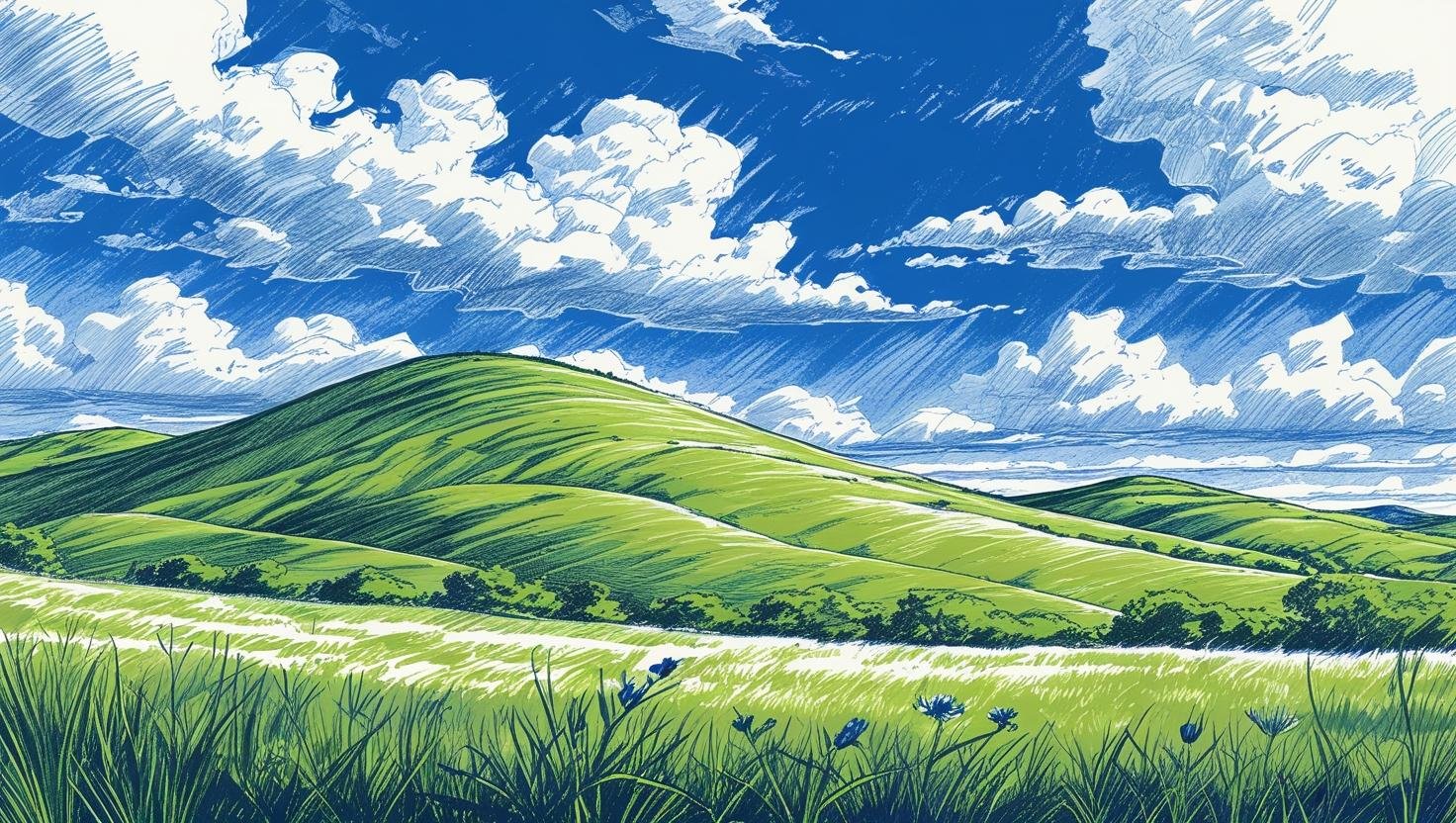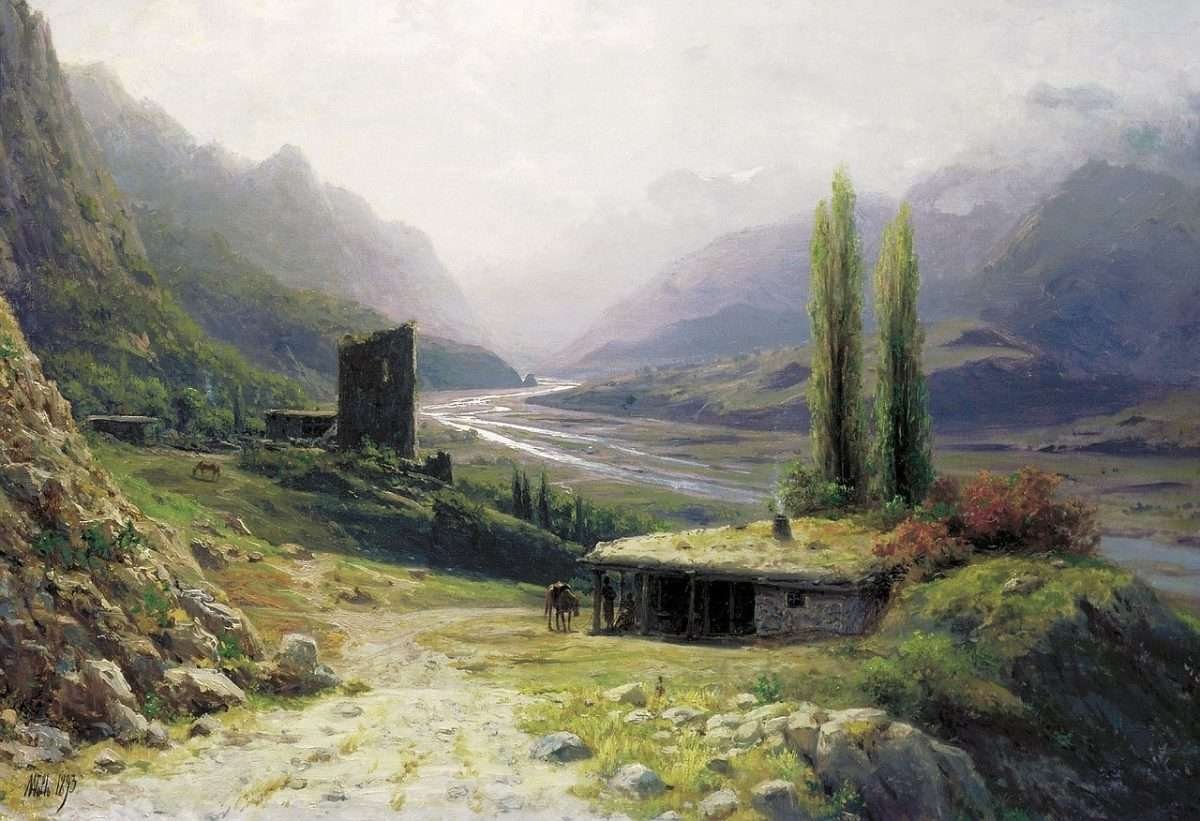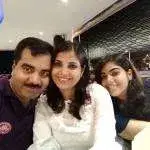
Oil
Learn the timeless medium of oil painting — prized for deep colours, smooth blending and long working time to create rich, layered works.
Skip to content
Two Learning Options:
1. @ Bangalore Campus
2. Online Live Interactive


Choose from a wide range of mediums and specialisations — learn step-by-step and build mastery.
Comprehensive program with 144 sessions, each designed to sharpen your artistic skills.
Each session is 45 minutes. Two sessions are conducted in a single day.
Flexible schedule: attend twice or three times a week based on your convenience.
Choice of 09 Months or 06 Months programs to match your learning pace.
Learn on your preferred days: Weekdays or Weekends — flexible for all schedules.
15,000+ Students
Trained Worldwide
Structured Courses
for All Levels
Expert Mentors
Global Exposure
The following are the Mediums available as Option to You. Select any 6 Mediums / Specialisation among the options vailable

Learn the timeless medium of oil painting — prized for deep colours, smooth blending and long working time to create rich, layered works.

Fast-drying and versatile — acrylics let you experiment with bold colours, layering, texture and mixed-media techniques.

Master transparent washes, subtle gradients and the vivid yet delicate effects unique to watercolours.

Expressive and buttery — oil pastels provide intense pigment and a painterly drawing experience with rich textures.

Velvety pigments perfect for creating luminous portraits and landscapes through blending and layering techniques.

Ideal for foundational training in tone and form — charcoal offers dramatic contrasts and expressive mark-making.

Refine precision and control — pen work teaches hatching, stippling and confident line techniques for illustrations.

Combine drawing accuracy with painterly washes — draw precisely then activate with water for soft, painterly effects.

Explore creative freedom by combining paints, inks, collage and drawing materials to build layered, experimental work.
Explore diverse art specialisations.

Capture the beauty of nature — from rolling hills to serene lakes — through colour, depth and perspective.

Experiment with surfaces and layers — creating tactile works with dimension and impact.

Explore freedom of expression with colours, shapes and forms that go beyond reality.

Learn the art of capturing likeness, mood and character through detailed portraits.

Discover Japanese-inspired styles — expressive characters and dynamic storytelling.

Create humorous and exaggerated characters that entertain and inspire.

Master key frames and motion basics — the foundation for animated storytelling.

Bring style to life by sketching garments, accessories and runway-ready looks.

Visualise and present design ideas — from everyday items to innovative concepts.
Choose Offline or Online. Flexible timings — Weekday | Weekend
Weekly Twice or Thrice Option — 144 Sessions — 9 months / 6 months. Flexible Timings (Weekday | Weekend)
Live online classes. Ideal for students in India who want the full diploma experience remotely.
Weekly Twice or Thrice Option — 144 Sessions — 9 months / 6 months. Flexible Timings (Weekday | Weekend)
Ideal for serious learners seeking a structured Diploma in Fine Arts with hands-on practice and certification.
Original fees: $ 799
Discounted Fees: $ 599
Weekly Twice or Thrice Option — 144 Sessions — 9 months / 6 months. Flexible Timings (Weekday | Weekend)
Designed for international students — global-friendly timings.
Unlock your passion for art and inspire the next generation of artists with our Diploma in Fine Arts! Gain expert knowledge, hands-on experience, and creative teaching techniques to build a fulfilling career in art education. Whether you’re a seasoned artist or a newcomer, this course equips you with the skills to lead vibrant, engaging art classes. Start your journey to becoming a certified art teacher today!
Choose the learning path that suits you best! Opt for Classroom Classes for hands-on, face-to-face learning, Online Interactive sessions for real-time engagement from anywhere, or eLearning for a flexible mix of video tutorials and live classes. The choice is yours to create your perfect art journey!
FUNDAMENTALS TO INTENSIVE
The Diploma Program in Fine Arts by Konsult is designed for artists looking to refine their skills and deepen their understanding of diverse artistic mediums and techniques. This comprehensive program offers nine core specializations, each crafted to elevate your creative abilities to new heights. Whether you are an aspiring professional or a passionate hobbyist, this program will provide you with the knowledge and hands-on experience needed to excel in your artistic journey.
Upon completing the Sketching and Drawing Course, a range of career opportunities opens up for aspiring artists.
You can pursue roles as:
This course lays a solid foundation for various creative careers, offering opportunities in both traditional and digital media industries.
Sketching and Drawing Course: Brief Description
Introduction to Sketching and Drawing
- Overview of materials and tools
- Basic techniques and safety practices
Line and Shape
- Understanding and practicing line types
- Drawing basic shapes and forms
Proportions and Measuring
- Techniques for accurate proportions
- Measuring and scaling objects
Perspective Basics
- Introduction to one-point perspective
- Drawing simple objects in perspective
Advanced Perspective
- Introduction to two-point perspective
- Drawing more complex scenes
Light and Shadow
- Understanding light sources
- Techniques for shading and creating depth
Texture and Detail
- Techniques for drawing various textures
- Adding fine details to drawings
Still Life Drawing
- Setting up and drawing a still life
- Focus on composition and detail
Drawing the Human Figure
- Basic human anatomy
- Proportions and structure of the human body
Drawing Faces and Expressions
- Facial proportions and features
- Capturing different expressions
Landscape Drawing
- Elements of landscape composition
- Techniques for drawing natural elements
Drawing from Photos
- Tips for using photographs as references
- Maintaining artistic integrity
Composition and Design
- Principles of good composition
- Creating balanced and interesting layouts
Exploring Different Styles
- Introduction to various drawing styles
- Experimenting with different techniques
Developing a Personal Style
- Finding and developing your artistic voice
- Techniques for creating unique works
Portfolio: Final Project and Review
- Completing a comprehensive final project - Portfolio
- Individual feedback and course review
Materials Needed:
- Graphite pencils (various grades)
- Charcoal pencils
- Erasers (kneaded and standard)
- Drawing paper
- Sketchbook
- Blending stumps / Smudging Tool
- Ruler
Self-Assignments:
- Self-assignments to reinforce concepts learned in class
Portrait Drawing Course: Brief Description
Introduction to Portrait Drawing
- Overview of course objectives and materials
- Basic techniques and proportions of the human face
Understanding Facial Structure
- Anatomy of the skull and facial muscles
- Proportions and alignment of facial features
Drawing the Head from Different Angles
- Techniques for drawing heads in various perspectives
- Practicing front, profile, and three-quarter views
Detailed Features: Eyes
- Structure and anatomy of the eye
- Techniques for drawing realistic eyes
Detailed Features: Nose
- Structure and anatomy of the nose
- Techniques for drawing realistic noses
Detailed Features: Mouth
- Structure and anatomy of the mouth and lips
- Techniques for drawing realistic mouths
Detailed Features: Ears
- Structure and anatomy of the ears
- Techniques for drawing realistic ears
Drawing Hair
- Techniques for drawing different hair textures and styles
- Understanding the flow and volume of hair
Light and Shadow
- Understanding light sources and their effects on the face
- Techniques for shading and creating depth
Expressions and Emotions
- Techniques for drawing various facial expressions
- Understanding the muscles involved in expressions
Drawing Children and Elderly Faces
- Adjusting proportions for different ages
- Techniques for capturing the essence of age
Portrait Composition and Layout
- Principles of good composition in portrait drawing
- Creating balanced and interesting layouts
Drawing Hands and Gestures
- Anatomy and structure of hands
- Techniques for drawing hands in different poses
Full-Figure Portraits
- Combining head, hands, and body for full figure portraits
- Techniques for maintaining proportions and balance
Drawing from Photographs – Loomis Method
- Tips for using photographs using the Loomis Method
- Techniques for maintaining realism and avoiding distortions
Materials Needed:
- Graphite pencils (various grades)
- Charcoal pencils
- Erasers (kneaded and standard)
- Drawing paper
- Sketchbook
- Blending stumps
Self-assignments:
- Optional assignments to reinforce concepts learned in class
Perspective Drawing Course: Brief Description
Introduction to Perspective Drawing
- Overview of course objectives and materials
- Basics of perspective drawing, understanding horizon line and vanishing points
Drawing Tools and Techniques
- Detailed look at pencils, rulers, and erasers
- Techniques for creating straight lines and accurate measurements
One-Point Perspective Basics
- Understanding one-point perspective
- Drawing simple objects using one-point perspective
One-Point Perspective Applications
- Applying one-point perspective to more complex scenes
- Drawing interiors and streetscapes
Two-Point Perspective Basics
- Understanding two-point perspective
- Drawing simple objects using two-point perspective
Two-Point Perspective Applications
- Applying two-point perspective to more complex scenes
- Drawing buildings and landscapes
Three-Point Perspective Basics
- Understanding three-point perspective
- Drawing simple objects using three-point perspective
Three-Point Perspective Applications
- Applying three-point perspective to more complex scenes
- Drawing towering buildings and aerial views
Atmospheric Perspective
- Understanding atmospheric perspective
- Techniques for creating depth using value and color
Drawing Curved Objects in Perspective
- Techniques for drawing circles and curves in perspective
- Drawing cylinders, arches, and other curved objects
Ant’s View and Bird’s View
- Techniques for drawing Ant’s view and Bird’s View in perspective drawings
- Adding realism to the drawing
Perspective in Architectural Drawing
- Techniques for drawing architectural elements in perspective
- Drawing buildings and structures accurately
Materials Needed:
- Graphite pencils (various grades)
- Rulers, compasses
- Erasers (kneaded and standard)
- Drawing paper
- Sketchbook
Self-assignments:
- Optional assignments to reinforce concepts learned in class
Watercolor Painting Course: Brief Description
Introduction to Watercolor Painting
- Overview of materials and tools
- Basic watercolor techniques and safety practices
Understanding Materials and Tools
- Detailed look at brushes, paper, and paints
- Preparing your materials and workspace
Color Theory and Mixing
- Basics of color theory
- Techniques for mixing colors and creating a color wheel
Basic Techniques
- Introduction to basic watercolor techniques (wet-on-wet, wet-on-dry)
- Practicing brushstrokes and washes
Creating Washes and Gradients
- Techniques for creating flat washes, graded washes, and variegated washes
- Practical exercises on different wash techniques
Light and Shadow in Watercolor
- Understanding light sources and shadows
- Techniques for depicting light and shadow
Composition and Design
- Principles of good composition
- Creating balanced and interesting layouts
Still Life Painting
- Setting up and sketching a still-life
- Techniques for painting still-life objects
Layering and Glazing
- Techniques for building up layers and creating depth
- Practical exercises on layering and glazing
Detail and Texture
- Adding details and texture to paintings
- Techniques for various textures (wood, fabric, metal)
Landscape Painting
- Elements of landscape composition
- Techniques for painting natural elements (trees, water, sky)
Nature Painting from Photographs
- Tips for using photographs as references
- Techniques for maintaining artistic integrity
Special Effects and Techniques
- Introduction to special effects like salt, alcohol, and resist techniques
- Practical exercises on special effects
Advanced Techniques
- Exploring advanced techniques (negative painting, lifting)
- Practical exercises on advanced methods
Developing a Personal Style
- Exploring different styles and finding your artistic voice
- Techniques for developing a unique painting style
Final Project and Review - Portfolio
- Completing a comprehensive final painting project - Portfolio
- Individual feedback and course review
Materials Needed:
- Watercolor paints (various colors)
- Brushes (variety of shapes and sizes)
- Watercolor paper
- Palette
- Water containers
- Masking tape and fluid
- Rags or paper towels
Self-assignments:
- Self-assignments to reinforce concepts learned in class
Oil Painting Course: Brief Description
Introduction to Oil Painting
- Overview of materials and tools
- Basic techniques and safety practices
- In-depth look at brushes, paints, and mediums
- Preparing your materials and workspace
Color Mixing and Theory
- Basics of color theory
- Techniques for mixing colors and creating a color wheel
Basic Techniques
- Introduction to basic oil painting techniques (glazing, impasto)
- Practicing brushstrokes and blending
Understanding tonal values
- Techniques for creating underpainting
- Importance of tonal values
Building Layers
- Techniques for building up layers in oil painting
- Understanding the fat over lean principle
Light and Shadow
- Understanding light sources and shadows
- Techniques for depicting light and shadow
Still Life Painting
- Setting up and sketching a still life
- Techniques for painting still life objects
Landscape Painting
- Elements of landscape composition
- Techniques for painting natural elements (trees, water, sky)
Texture and Detail
- Adding texture and fine details to paintings
- Using different tools and techniques for texture
Using Mediums
- Introduction to various painting mediums
- Effects of different mediums on oil paint
Painting Nature from Photographs
- Tips for using photographs as references
- Techniques for maintaining artistic integrity
Advanced Techniques
- Exploring advanced techniques (sfumato, scumbling)
- Practical exercises on advanced methods
Developing a Personal Style
- Exploring different styles and finding your artistic voice
- Techniques for developing a unique painting style
Creative Composition
- Principles of strong composition
- Creating balanced and interesting layouts for paintings
Final Project and Review – Portfolio
- Completing a comprehensive final painting project - Portfolio
- Individual feedback and course review
Materials Needed:
- Oil paints (various colors)
- Brushes (variety of shapes and sizes)
- Canvas or painting surface
- Palette
- Mediums (e.g., linseed oil, turpentine)
- Palette knives
- Rags or paper towels
Self-assignments:
- Self-assignments to reinforce concepts learned in class

We are very happy to be part of the Konsult Art & Design Academy family. We moved back from the US 1.5 years back and my son, Aniketh has been a student here since then. The teachers are proficiently skilled in art and they also have a very good philosophy of teaching here. They nurture the child’s interest in art and help the child’s talent blossom. Aniketh loves to go to his art class.

Our daughter is going for the oil painting course at Konsult for last one year and it has been an amazing experience so far. We’ve seen her improving day by day with great mentors at the academy. We would love to be associated with Konsult which provides such a great platform for art.

I did visual art course in Konsult art academy and enjoyed every bit of it. The faculty members are really good! I thank Shahina ma’am, Vijetha, Amit, Ankitha and the management for their support.

Excellent academy. Friendly teachers.
Good environment to slow down and spend time to learn arts in this fast paced world

The Diploma in Fine Arts (DFA) by Konsult is meant to give beginners a strong foundation in Visual Art. Students are introduced to the basics of Textured Painting and move up to advanced techniques aided by practical work.
(Between 9.30 am to 5.30 pm Mon - Sat IST)

Contents